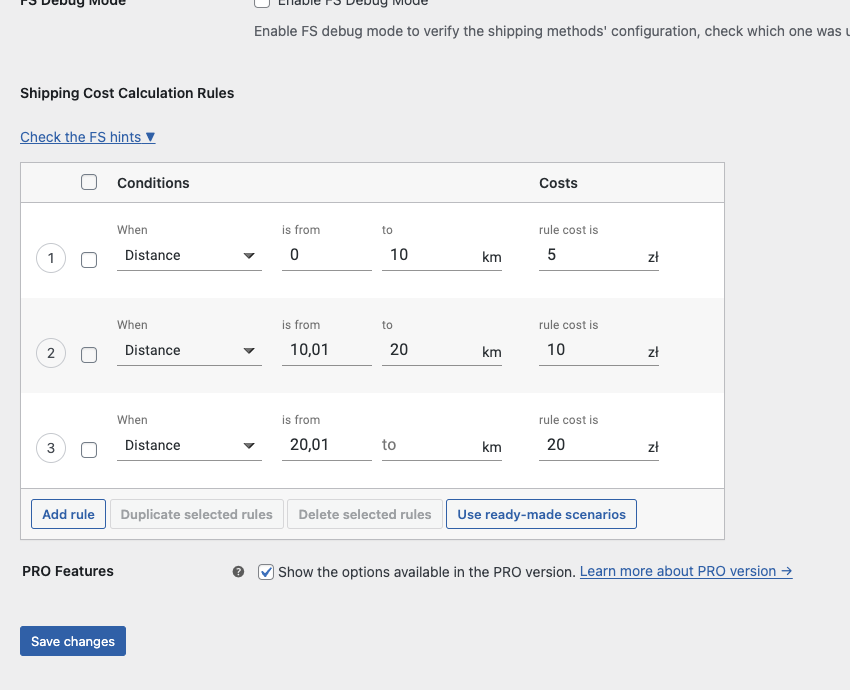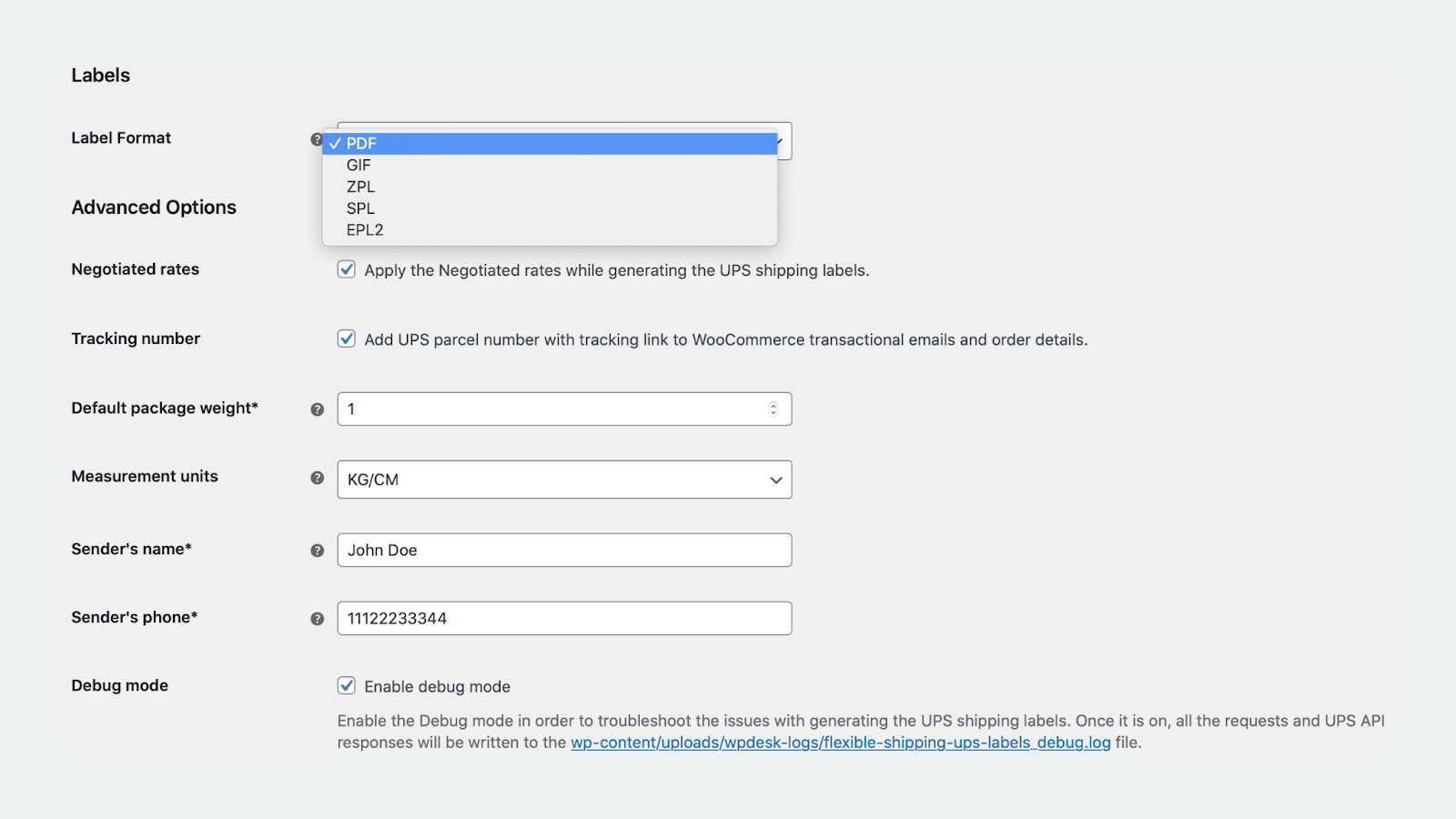
Subscribe to our newsletter

Wondering how to efficiently ship products to your customers from home? This thorough guide will assist you in creating a professional shipping system that thrills consumers and keeps expenses affordable, regardless of whether you’re delivering your first item or trying to optimize your present procedure.
Shipping plays a pivotal role in customer satisfaction. In fact, 93% of online buyers claim that shipping affects their entire buying experience, and 84% say they are less inclined to return an item after only one bad delivery. These numbers highlight a critical truth: a well-structured shipping strategy can be the key difference between a thriving home-based business and one that struggles to stay afloat.

In this article, you will:
See more:
After only one bad delivery experience, many customers will stop buying from your business in today’s instant-gratification industry. Additionally, small businesses are under more pressure than ever to meet the high expectations of their customers due to the actions of giants like Amazon.
However, don’t be intimidated by these. In fact, clever shipping techniques might turn into your company’s hidden weapon. According to research, 173% of customers are more inclined to make further purchases from businesses that go above and beyond in terms of delivery. Better still? This can be accomplished without going over budget.
While major retailers juggle complex logistics networks, successful small businesses thrive by mastering just four essential components:
Whether you ship ten or a thousand shipments a month, these principles are the foundation of every successful shipping company.
The most important thing is this: Determine your typical product weight and dimensions first because these factors will have the biggest impact on your shipping expenses. With integrated tracking and insurance without the premium cost, USPS Priority Mail frequently turns out to be the best option for start-up companies. Keep in mind that every item you deliver is more than simply a box; it’s a branded touchpoint that has the power to convert new consumers into devoted ones.
A sobering reminder that 266% of internet buyers now consider free delivery to be the norm. Although most small companies cannot instantly match Amazon’s shipping speed and rates, you may still be successful. The secret? Begin with a straightforward, environmentally friendly delivery plan, then adjust in response to actual consumer feedback and data. Try various strategies, such as flat-rate alternatives or free shipping criteria, until you determine what suits your consumers and your profits.
Starting a shipping business without enough preparation is like trying to navigate without a map. Shipping 10 vs 100 items a month differs not just in volume but also in completely different operational strategies, carrier partnerships, and cost structures.
Start with these critical questions:
Pro tip: During peak seasons, e-commerce shipping volumes usually increase by 200–300%, and being unprepared might make your busiest period much more difficult. Your infrastructure should be designed to handle your highest volumes, not your typical ones.
Looking to optimize your shipping costs? As experts in e-commerce shipping solutions, we understand the challenges of managing shipping expenses. Our range of tools at Octolize helps businesses reduce shipping costs by up to 30% through smart automation and optimization.
For WooCommerce stores, our Flexible Shipping PRO plugin lets you create shipping rules based on weight, cart total, shipping class and many more. The UPS Live Rates plugin ensures you always get the best carrier rates, while our Shipping Packages feature helps to split the cart content into multiple packages.
Want to learn more about the functionality of our plugins, including Flexible Shipping PRO? Take a look at the video below and the corresponding playlists.
The best Table Rate Shipping for WooCommerce. Period. Create shipping rules based on weight, order totals or item count.
View Details or Add to cartShopify store owners can take advantage of our Distance Based Rates app for location-optimized pricing, and our Shipping Discounts app for creating strategic shipping promotions that maintain profitability while attracting customers. Whether you’re shipping domestically or internationally, our solutions help you automate rate calculations, reduce manual work, and ultimately save both time and money on every shipment.
Your e-commerce success depends on your choice of shipping method, which affects both consumer satisfaction and your bottom line. Shipping choices are a major factor in consumers’ decisions to buy, thus your approach is crucial to increasing sales.
Below, you can find the key components that will enable you to surpass consumer expectations while maintaining cost balance.
You can automate shipping costs based on cart totals, weight, and destination with tools like Distance Based Shipping Rates or Flexible Shipping PRO to effectively implement free or location-based shipping strategies. You can guarantee profit margins and customer satisfaction by utilizing these plugins. Below, you can find the screenshot from the Flexible Shipping’s table ruleset with a usage of Distance condition:

Selecting your shipping carrier and service level can be the difference between success or failure for your e-commerce business. For example, USPS might be more cost-effective on packages under five pounds that are shipped domestically. Comparatively, DHL services over 220 countries with unrivaled delivery speeds. Meanwhile, FedEx and UPS are leaders of the industry in guaranteed delivery time slots and achieving high on time deliveries.
Reasonably priced international delivery. Enable FedEx live rates for WooCommerce, save money and display the dynamically calculated shipping cost to your customers.
View Details or Add to cartBy recognizing the strengths of each carrier, you will be able to create an essential mix that optimizes both acquired capital and customer satisfaction. A state-of-the-art shipping program streamlines the management of various carriers, with several companies reporting savings of up to 30% in costs via automated carrier selection.
It’s crucial to understand that each of the shipping carriers, offers distinct advantages for different business needs. Choosing the right carrier mix can significantly impact your results.
For instance USPS is handling over 7.3 billion packages annually at competitive rates for small items. On the other hand, FedEx and UPS is dominating time-sensitive deliveries with high on-time rates while DHL is connecting to 220+ countries. Below you can find the key aspects of major carriers to help you make informed decisions.
Shipping strategies differ significantly between domestic and international deliveries. Each of them requires specific considerations for success. Understanding these differences helps you choose appropriate services, set accurate pricing, and meet customer expectations. Below you can find the comparison across different service levels.
| Service Level | Domestic | International |
| 1.Economy/Ground | 1.2-8 business days. Most cost-effective option. Best for non-urgent shipments. USPS Ground, FedEx Ground, UPS Ground. $5-15 for average package. | 1.7-21 business days. Most affordable international option. Surface or standard mail services. Uses local postal services. $20-50 for average package. |
| 2.Standard | 2.2-5 business days. Good balance of speed and cost. USPS Priority Mail, UPS 3-Day. Popular for e-commerce. $8-25 for average package. | 2.4-10 business days. Standard air service. More reliable tracking than economy. Common for e-commerce. $30-80 for average package. |
| 3.Express | 3.1-3 business days. Guaranteed delivery dates. UPS 2nd Day Air, FedEx 2Day. Priority handling. $15-45 for average package. | 3.2-5 business days. Premium air service. Full tracking and insurance. DHL Express, FedEx International Priority. $50-150 for average package. |
| 4.Next Day/Overnight | 4.Next business day delivery. Fastest domestic option. FedEx Overnight, UPS Next Day Air. Premium service. $25-75 for average package. | 4.1-3 business days. Fastest international service. Highest priority handling. Premium rates. Full tracking. $100-300+ for average package. |
By setting up business accounts with major carriers you can transform your shipping costs overnight. Business accounts can slash your shipping costs by 20-60% compared to retail rates. Below you can find the options.
USPS Commercial Accounts:
UPS and FedEx Business Accounts:
Pro tip: Start with a USPS account for immediate savings. After that, add UPS or FedEx accounts as your volume grows. Successful e-commerce businesses typically save 30-40% on their overall shipping costs by leveraging multiple carriers. In the meantime, they ensure to always have backup options during peak seasons.
Check USPS WooCommerce Live Rates PRO plugin →
Mastering the art of packaging is about creating an unboxing experience that turns customers into advocates. Research shows that the customers are more likely to make repeat purchases when they receive products in premium packaging. From choosing the right materials to handling delicate items, let’s explore the best ways to ship products that arrive safely and impress your customers.
Smart business owners know that effective shipping software should seamlessly connect with their e-commerce platform while providing features like multi-carrier support, automated label generation, and order tracking. It is crucial to consider factors like integration capabilities with your current systems, pricing structure, and supported carriers. The right software can transform your fulfillment process from a time-consuming task into a streamlined operation, and that does not depend on the quantity of orders shipped monthly.
Mastering the art of packaging is about creating an unboxing experience that turns customers into advocates. Research shows that the customers are more likely to make repeat purchases when they receive products in premium packaging. From choosing the right materials to handling delicate items, let’s explore the best ways to ship products that arrive safely and impress your customers.
The foundation of successful shipping starts with selecting appropriate packaging materials. It is crucial to invest in high-quality boxes, bubble wrap, air pillows, and void fill that balance protection with environmental responsibility.
Pro tip: Packaging materials in bulk reduces costs. That enables you to offer free shipping without sacrificing margins. Furthermore, you should consider custom-branded materials. That will enhance the unboxing experience.
Prioritize product safety above all else. Each item requires specific protection methods. This includes double-boxing fragile items and using custom inserts for electronics. Ensure there is no movement within the package. Consider wrapping items individually, use adequate cushioning. Moisture barriers will be perfect for sensitive items and edge protectors for sharp corners.
Precise measurements are essential for economical product delivery to your clients. Because of dimensional weight pricing, shipping costs may rise due to inaccurate measurements. Purchase high-quality measuring equipment and a shipment scale. To make shipments easier in the future, compile a size/weight database for your goods. When figuring the final weights, don’t forget to account for packing materials.
Pro tip: You might find chances for packaging optimization and expensive errors in your measurement process by conducting routine audits.
Products that are sensitive to temperature must be shipped with additional care to preserve their integrity. Every year, exposure to heat and cold costs e-commerce millions of dollars in losses. For delicate products, use temperature indicators, insulated containers, and phase-change materials. Shipping policy according to the season will be a good move. For instance heat packs will be perfect for winter cosmetic packages or consider faster summer shipping for chocolates. Track weather trends along shipping lanes to foresee possible problems.
Your packages will flow smoothly due to the correct documentation while wrong documentation results in costly delays and returns. You can reduce shipping service costs while ensuring delivery success by understanding labels, customs requirements, and tracking options.

Post office visits are not enough for a shipping business to be successful. A methodical strategy that optimizes effectiveness in constrained space will be needed in this case. Research shows that well-organized home-based sellers ship orders 3x faster than those without proper systems. Below you can find how to transform your space into a streamlined shipping hub that can handle growing order volumes.
Firstly, distinct zones for inventory, packing, and shipping supplies would transform available space into a productive shipping station. A sturdy table at proper height, good lighting, and easy access to shipping supplies would be perfect for your workspace. Organized workspace reduces fulfillment errors and increases packing speed. It is worth to mention, that vertical storage solutions would maximize limited space and keep frequently used items within arm’s reach.
Firstly, it is good to know that a systematic pick and pack process is crucial for any online store looking to streamline your shipping operations. Furthermore, consider implementing a logical flow from order receipt to package completion – organize inventory by SKU, batch similar orders together, and maintain a standardized packing sequence. Picking lists and packing slips are likely to reduce errors by 780%. The most efficient home operations process orders in waves rather than one at a time.
It is worth mentioning that smart scheduling can save up to 10 hours weekly in post office visits. After you exceed specific volume levels, the majority of carriers provide free pickup services. Examine the pickup hours and restrictions for each carrier. For example, UPS and FedEx may have minimum shipping limitations, whereas USPS gives free pickup regardless of volume. To improve operational uniformity, think about setting up regular pickup times.
It is good to know that properly managing stock levels prevents any shipping delays and customer dissatisfaction. Set up a digital inventory system that keeps records of stock levels, reorder points, and item locations. Regular audits help to resolve inconsistencies that can lead to delay in delivery. Based on sales velocity and supplier lead times, you would be able to set up safety stocks.
Smart shipping strategies can help you cut down the expenses of your online business still ensuring customer satisfaction. Shipping costs alone generally take up 15-20% of an e-commerce budget. Optimizing the shipping is not just about arriving at the lowest rates but, more importantly, developing a lasting competitive edge in terms of operational efficiency.
See more:
Good news: deliveries within the country are very straightforward, and to the greatest extent, using standard shipping services can take about 2-5 working days. The time taken for international deliveries can range from 7-21 days, based on the destination and chosen shipping method. Express shipping can reduce these times considerably-domestic, 1-3 days; international, 3-5 days. Customs clearance may add to time for international shipments. Planning time ahead will allow you to manage both your operation and customer expectations.
USPS Priority Mail represents an excellent compromise between shipping cost and service level for most small businesses: it’s fast—average delivery times are between 2 and 3 days—and offers $50 in built-in insurance. Their flat-rate boxes are very economical for items weighing between 2 and 15 pounds. UPS and FedEx—these services provide thorough tracking and much better delivery windows, although for a premium. Therefore, they would be helpful for higher-value or time-sensitive deliveries.
Successfully moving goods across borders requires a careful consideration of many vital components. Every country has its own demand regarding customs paperwork, duties, taxes, and restricted commodities. Several speed options for shipping are recommended, where customers can choose the combination of cost and delivery time they prefer. One keynote: always include tracking with international orders-this is invaluable to you and your customer alike.
Your profit margins will be dramatically better with intelligent packaging choices. Start with right-sizing your boxes and mailers to avoid paying dimensional-weight charges-another way to reduce shipping costs by 20-40%. It is worth to mention that you could use light-weight yet protective materials such as bubble wrap and air pillows. A very worthwhile investment is custom boxes matching our most common product sizes, avoiding wasted space and, by extension, materials and shipping costs.
Gaining a satisfying carrier partnership is necessary for the success of your shipping. It is crucial that you would need to focus your evaluation of services on factors that pertain to your business volume, product characteristics, and customer expectations-including special factors like pickup services, tracking capabilities, and insurance options. Many of the successful businesses use multiple carriers to fulfill a range of shipping needs. Your ideal mix will depend on the combination of package sizes, delivery speeds, and budget restraints that you work with.
[1] “Statistics That Prove How Your Delivery Speed Impacts Your Business”, Meteor Space, August 25, 2022, https://www.meteorspace.com/2022/08/25/statistics-that-prove-how-your-delivery-speed-impacts-your-business/
[2] “How to Calculate Free Shipping”, Shipwise Blog, https://www.shipwise.com/blog/how-to-calculate-free-shipping
[3] “Understanding Normal Shipping Percentages: A Comprehensive Guide for E-commerce Businesses”, Linbis, https://www.linbis.com/general/understanding-normal-shipping-percentages-a-comprehensive-guide-for-e-commerce-businesses/
[4] “Free Shipping in Online Shop”, Dealavo, https://dealavo.com/en/free-shipping-online-shop/
[5] “Free Shipping Statistics”, Contimod, https://www.contimod.com/free-shipping-statistics/
[6] “The Importance of Product Packaging”, Business Dasher, https://www.businessdasher.com/importance-of-product-packaging/
[7] “Consumer Demand for Sustainable Packaging Is on the Rise”, Smash Brand, https://www.smashbrand.com/articles/consumer-demand-for-sustainable-packaging-is-on-the-rise/